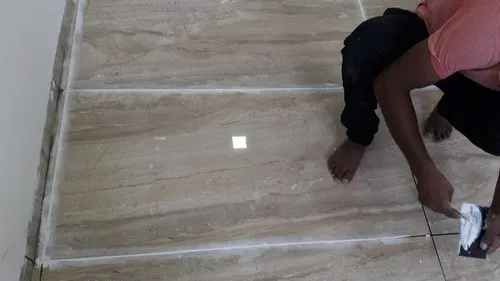When it comes to building materials, the debate between wall putty and cement often symbolizes a quest for strength and durability. You might wonder, is wall putty truly as strong as cement? As you ponder this question, consider the intricacies of their composition and the practical aspects of their application. The answer might surprise you as we delve into the comparisons and nuances between these two essential construction components.
Composition of Wall Putty and Cement
- When comparing the composition of wall putty and cement, it’s essential to understand the distinct chemical properties that differentiate the two substances. Wall putty primarily consists of white cement, polymers, fillers, and additives. These components give wall putty its smooth texture and excellent adhesive properties.
- White cement is the primary binding agent in wall putty, providing strength and durability to the mixture. Polymers in wall putty enhance its flexibility and water resistance, making it ideal for interior applications. The fillers present in wall putty contribute to its smooth finish and help in filling cracks and imperfections on walls. Additives such as anti-fungal agents or setting accelerators may also be included to improve specific properties of the wall putty.
- In contrast, cement is primarily composed of calcium, silicon, aluminum, and iron. The chemical properties of cement allow it to undergo hydration reactions, forming crystalline bonds that give concrete its strength. Cement relies on hydration to create a network of interlocking crystals, providing structural integrity to the material. Understanding these differences in chemical properties and bonding mechanisms between wall putty and cement is crucial in determining their respective strengths and applications.

Strength Comparison: Wall Putty Vs. Cement
- The chemical composition variations between wall putty and cement directly impact their respective strengths in construction applications. When comparing the tensile strength of wall putty and cement, cement generally exhibits higher tensile strength due to its composition of clinker, gypsum, and other additives. Cement also tends to have superior adhesion properties, forming stronger bonds with various substrates.
- On the other hand, wall putty is known for its excellent crack resistance capabilities, providing a smooth and even surface that helps prevent cracks from forming. Additionally, wall putty offers flexibility characteristics that allow for slight movements in the building structure without compromising the integrity of the applied layer.
- While cement is renowned for its robustness and durability, wall putty excels in providing a level of flexibility that can be beneficial in certain construction scenarios. Therefore, the choice between wall putty and cement depends on the specific requirements of the project, balancing factors such as tensile strength, adhesion, crack resistance, and flexibility.
Durability Factors to Consider
- Consider key durability factors before deciding between wall putty and cement for your construction project. Durability is a critical aspect to ponder when choosing between wall putty and cement. Cement is known for its exceptional durability, with high resistance to weather elements such as rain, heat, and cold. Its robust nature makes it a preferred choice for projects requiring long-lasting structural integrity.
- On the other hand, wall putty, while offering benefits like smooth finishes, may not exhibit the same level of durability as cement. Weather resistance is another crucial factor to evaluate. Cement’s innate strength enables it to withstand harsh weather conditions over an extended period. Wall putty, while providing a good surface for painting and aesthetic appeal, may require additional protective coatings to enhance its weather resistance.
- When longevity and resilience are paramount, cement emerges as the more durable option compared to wall putty. Make an informed decision based on these durability considerations to ensure the longevity and stability of your construction project.
Application Suitability: Wall Putty Vs. Cement
- To determine the most suitable choice for your project between wall putty and cement, assess their respective application suitability based on durability factors discussed earlier. When considering surface preparation, wall putty often requires less effort compared to cement. Wall putty is smoother and easier to apply, providing a more even base for painting, which can enhance finish quality. On the other hand, cement may need more extensive preparation work due to its rough texture.
- In terms of ease of application, wall putty is generally more user-friendly, allowing for smoother application and better adhesion. Additionally, wall putty tends to have a quicker drying time compared to cement, which can speed up the overall project timeline. However, cement is known for its strength and durability in high-traffic areas. Ultimately, the choice between wall putty and cement depends on your specific project requirements, considering factors such as surface preparation, finish quality, ease of application, and drying time.
Cost-Effectiveness Analysis
- For a comprehensive evaluation of cost-effectiveness between wall putty and cement, analyze their respective financial implications in relation to your project’s scope and requirements. When considering cost savings, wall putty may initially appear more expensive than cement per unit. However, due to its smoother application and quicker drying time, wall putty can reduce labor costs and speed up the overall project timeline. This can result in significant cost savings in terms of labor expenses and potentially lower overall project costs.
- Additionally, wall putty’s performance benefits, such as its ability to provide a smoother and more even finish compared to cement, can lead to long-term savings by reducing the need for excessive paint or maintenance. Therefore, while wall putty may have a higher upfront cost, its cost-effectiveness over the project’s lifecycle, coupled with its performance benefits, makes it a viable option worth considering for your project.
Conclusion
In conclusion, while wall putty and cement both serve as important building materials, cement is generally stronger and more durable than wall putty. Cement is better suited for structural applications due to its higher compressive strength. Wall putty, on the other hand, is more commonly used for finishing and smoothing surfaces. Consider the specific requirements of your project and the cost-effectiveness of each material when making your decision.